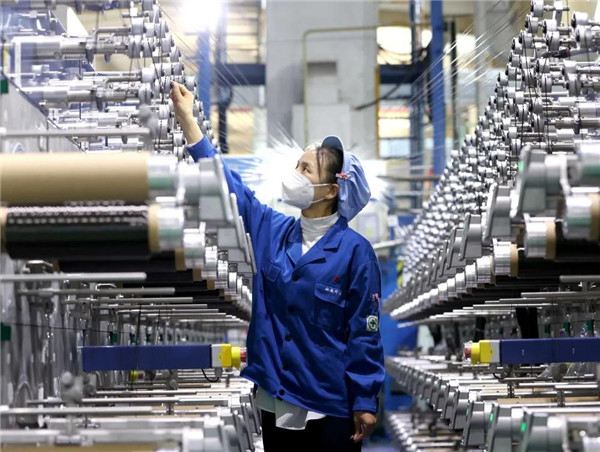"Global fashion industry is worth $1.2 trillion, of which $250 billion originates annually from the United States. Fashion provides more than a positive personal impact. The industry employs nearly two million people every year. It is also an industry, which suffers a tremendous trade gap for US consumers because of the lower costs of labour that can be found around the world. The US exports about $6 billion in apparel each year, but imports more than $82 billion."

Global fashion industry is worth $1.2 trillion, of which $250 billion originates annually from the United States. Fashion provides more than a positive personal impact. The industry employs nearly two million people every year. It is also an industry, which suffers a tremendous trade gap for US consumers because of the lower costs of labour that can be found around the world. The US exports about $6 billion in apparel each year, but imports more than $82 billion.
Global fashion industry is worth USD 1.2 trillion, of which USD 250 billion originates annually from the United States. Fashion provides more than a positive personal impact. The industry employs nearly two million people every year. It is also an industry, which suffers a tremendous trade gap for US consumers because of the lower costs of labour that can be found around the world. The US exports about USD 6 billion in apparel each year, but imports more than USD 82 billion.
Fashion Fact File

About 75 per cent of garment workers worldwide are women. Up to 75 million people are employed by the fashion industry globally right now. In 2000, only 20 million people were believed to be employed by the industry. In the US, cotton pickers make an average of $40,000 per year. In India, the average employee makes $730 per year. In Uzbekistan, workers may not earn anything at all. In 2004, it was estimated that the informal economy within the fashion industry generated 35 per cent of global GDP, the figure is likely to be higher now.
The fact is that, though a majority of manufacturing occurs outside the US and Europe a majority of sales occurs inside the US and Europe. Economies everywhere are able to benefit from what this industry contributes. Whether there are ethnic, cultural, or national fashion trends that are emphasised, there is always a niche available for designers, manufacturers, and retailers. Although the US often dominates the fashion industry in terms of imports and influence, there really is something for every demography, if you are willing to look hard enough.
Understanding fashion
Fashion is more than just what you decide to add to your wardrobe. It is an industry, which provides manufacturing jobs, accounting jobs, and even entry-level retail jobs so that everyone has a chance to get involved. Specialist positions, like an accountant, earn an average $8,3000. When there are skills involved, then people can earn an income in the US that is at or above the average annual house hold income and that helps to grow economies, provide for family needs, and contribute to the growth of other industries. In the US, the average household spends about $1,700 per year on fashion items, including apparel, footwear, and related accessories.
Children’s fashion is expected to exceed $200 billion in total sales annually, which marks a 15 per cent increase in the past five years. Bridalwear is a fashion market, which generates more than $55 billion annually. Menswear generates more than $400 billion each year around the world; women’s wear contributes more than $620 billion in sales to the fashion industry annually.
Fashion becomes a priority for consumers, when other basic needs can be met, and there is money left over. No one is going to spend $300 on leather shoes when they need to put food on their table, pay their rent or mortgage, and have a way to get to work. Yet for this industry being a secondary priority, the total amount of sales that it achieves annually is quite impressive. If you can find the right niche within this industry, then you can become instantly competitive. That is why jobs continue to be created, often high paying, and why so many are pursuing an education in this field right now.












